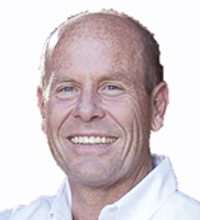Geothermal HVAC and Temperature Glid
When I was a kid growing up in the High Desert area of California, I can well remember wishing that some of the blazing heat from the summer could be saved in some type of thermal battery to be used in the winter. In the desert, it was common to have single-digit temperatures overnight, especially in the wintertime.
One of the most remarkable things about geothermal HVAC systems stems from the realization of this concept.
Geothermal solves one of the biggest challenges that face other solar power technologies. In case you didn’t know, geothermal is a solar power technology; it harnesses solar power in the form of raw BTUs stored in the earth. The earth absorbs 50 percent of the solar energy that comes our way, and stores it in the underground. The earth is the solar power battery, storing the energy for when we need it the most.
In most places in the U.S., we have either a balanced (cooling and heating seasons) or heating-dominant load for HVAC in buildings. This is advantageous for those using closed loop geothermal heat pumps. All summer long your heat pump is absorbing heat from the building (to create the cooling effect or “air conditioning”), and pumping it down into the ground. The earth has a certain degree of ability to dissipate the heat, but considerable heat energy stays around the ground loop, in effect “storing” even more heat energy for wintertime use. This is an effect that we call “thermal glide.” When wintertime comes, the ground temperature may be 10 degrees warmer than it would normally be naturally, and that energy is available for extraction to help heat.
During the winter, the loop is extracting heat, and will often leave the temperature around the loop field somewhat cooler than the normal temperature. As you can see, this is a great advantage as we start into the summer season and need that cooling effect.
All of this is helpful as a kind of thermal storage means. It can present some challenges if you are in a cooling dominant climate, or have a building with significant internal heat gains. Acting as a thermal sink without any relief presents a different challenge. Thermal Glide (increase in ground loop temperatures) can be a challenge for closed loop applications.
Fortunately, we’ve found that hot and humid climates generally have plentiful aquifers. These are better heat sinks (for cooling dominant buildings) than a closed loop field. The engineering of “Class V Thermal Exchange” geothermal systems has become an exact science, and yields remarkably good results if done right.
Like closed loop designs, Class V Thermal Exchange or “pump to reinjection” systems follow certain standards of design, especially in larger applications. In closed loop systems, design software depends on accurate data inputs. Information such as thermal conductivity of the earth should be site tested, helping designers to determine the length of borehole per ton of capacity. For pump to reinjection, a test bore can yield a lot of data that is helpful in determining water quality, depth to place the pump, injection well criteria, etc.
The economy of volume is our ally with larger cooling dominant systems. As the tonnage capacity goes up, the cost per ton can go down. I’ve worked in many situations in which the cost of a pump to injection geothermal source ends up costing about the same as a quality cooling tower alternative.
In the Sussex County Emergency operations center, the county was able to attain Needs+1 status by putting in a redundant well pump and injection well. But we even went one step further, placing emergency connects outside the building for an emergency cooling tower or dry cooler. They look like fire department connections, and add a level of security needed for the 911 operations center.
Geothermal-sourced HVAC systems open up your options to a whole new world of energy security that you can offer your clients:
- “All electric” technology
- All inside equipment
- Longevity
- Energy Efficiency
- Sound abatement
- Space savings
- Reduced refrigerant volume
A geothermal heat pump (GHP) is a self-contained piece of equipment with a factory-sealed refrigerant system. Reversing chillers offer both heating and cooling options from an abundant energy source/sink: the earth.
With geothermal heating and cooling systems, you have another sales tool to offer your customers that will give them greater options. Rooftops are cleaned up, and condenser pads are turned into peaceful break areas. With federal and local tax credits and the highest energy efficiency available, geothermal systems become an easy sales opportunity.
Geothermal is a mainstream technology; why not treat yourself and your clients to the benefits of a geothermal heat pump? You can get on the "Geothermal Day 2015" bandwagon by visiting www.GeothermalDay.com. National Geothermal Day aims to raise awareness of the environmental and economic benefits of geothermal energy and its vital role in building a clean and secure energy future. Use #GeoDay2015.
Much of the information about Class V Thermal Exchange in this article was taken from “Modern Geothermal HVAC Engineering and Controls Applications,” McGraw-Hill Professional.
Jay Egg is a consultant and designer of geothermal HVAC systems, and the author of two books and several articles on the subject. He is the founder of EggGeothermal, focusing on geothermal consulting, engineering and contracting technologies. He can be reached at jayegg.geo@gmail.com.





